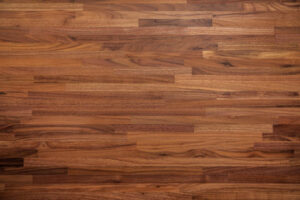Concrete contractors provide services to strengthen, restore, and construct concrete structures. They work with both commercial and residential properties.

Choose a concrete contractor that has a solid portfolio and good references. They should be able to visit your property and give you a quotation before starting the job. Contact Bakersfield Concrete Contractor Services for professional help.
They should also be open and communicative about the project timelines, costs, etc.
Concrete is a versatile material used in construction projects. It can be poured into almost any shape and can take on a variety of different textures and colors. In addition, concrete can be reinforced with wire mesh or rebar to add strength and stability to the structure. A professional concrete contractor is skilled in using all of these tools and materials to build any structure from concrete, such as foundations, sidewalks, driveways, slab floors or walls.
Before pouring concrete, a concrete contractor must first prepare the site. This involves removing any dirt or debris that may interfere with the concrete installation. It is also important to check the area for any underground utilities, such as pipes or sewer lines. The concrete contractor will then mark the area to indicate where the concrete is going to be poured. This can be done with stakes and flags, but it is often more efficient to use a laser level.
Once the forms are in place and the rebar is properly positioned, it is time to begin pouring the concrete. This is a messy job, so a good concrete contractor will protect themselves and their surroundings by wearing safety gear, such as hard hats and protective eyewear. They will also use a bulldozer to spread the concrete evenly and prevent it from being too thick in any one area.
During this phase, it is essential for concrete contractors to keep the project managers and supervisors updated on their progress. This can be done through text or email, but some contractors prefer to use project management software to ensure that everyone involved in the project gets the updates they need quickly and efficiently.
Depending on the size and complexity of the project, a concrete contractor will typically take anywhere from one to four days to complete the pouring process. Once the concrete is poured, it must be allowed to set for at least 24 hours before it can be walked on or driven on. Once the concrete has set, it will need to be cured for at least two years before it is considered safe for normal use.
Cleaning
Concrete surfaces need regular cleaning to remove accumulated dirt, debris and stains. This step is crucial to extending the life of your concrete surfaces and maintaining their attractive appearance. To clean concrete effectively, you’ll need a few supplies. Some of these may be found around your home, while others can be bought from a hardware store or online. For the best results, use a concrete-compatible cleaner designed to avoid damaging the surface. Other recommended supplies include a stiff-bristled brush, rubber gloves and a spray bottle for dispersing your cleaning solution.
Start by sweeping away loose debris and dust, paying special attention to corners and edges. If the concrete is outside, consider using a leaf blower or shop vac to eliminate stubborn debris build-up. It’s also a good idea to trim any plants or tree limbs that produce shade on your concrete surfaces.
Once the surface is clear, mix your cleaning solution in a bucket of warm water. Make sure to follow the manufacturer’s instructions closely. The type of cleaner you use will depend on the condition of your concrete, whether it has a sealer applied and the kind of stain or build-up present. For example, acid-containing cleaners will damage unsealed concrete, while pH-neutral cleaners work well on sealed or unpainted concrete.
If you have grease stains, try applying a layer of baby powder or cornstarch to the affected area. This will help pull the grease out of the concrete, allowing it to be swept away. Concrete-friendly degreasers are also available and can be used as a substitute for acidic cleaners.
Always remember to wear rubber gloves when working with chemicals and to scrub the concrete vigorously. Then, allow the concrete to dry thoroughly before resealing it.
Aside from the physical benefits of a clean driveway, sidewalk or patio, regularly cleaning and maintaining your concrete can boost curb appeal and increase the value of your property. By following the steps above, you can ensure that your concrete lasts for years to come. And if your concrete begins to sink or crack, contact us for affordable concrete lifting services!
Repairing
Concrete structures are subject to a lot of stress and can be damaged by environmental factors like freeze-thaw cycles and by traffic. Keeping up with regular concrete repair can extend the life of your commercial surfaces and prevent major structural damage.
Concrete repairs can be as simple as resurfacing or filling in small cracks and discoloration. More severe problems may require a more extensive process, such as patching or replacing entire sections of concrete. In any case, proper surface preparation is essential to a successful repair and the use of quality products that are specifically designed for your specific repair needs is key to ensuring long-lasting results.
The first step in concrete repair is to identify the cause of the defect. This should be done by examining the structure and its surroundings to determine the underlying causes of deterioration. This information should be used to design an appropriate repairing technique and materials.
Identifying the extent of the damage is also important. This can be accomplished by conducting a visual inspection and assessing the condition of the concrete. It is recommended that cracks, spalling, and surface wear be repaired as soon as they are detected to prevent them from getting larger.
Selecting the right repairing material is critical. There are many different types of concrete repair mixes available. QUIKRETE® offers a variety of repair materials and formulations, each designed for specific repair conditions. When selecting a repair product, it is important to consider the material performance such as tensile strength, shrinkage crack resistance, and surface hardness. It is also important to take into account the environmental conditions that the material will be exposed to, such as temperature and moisture.
After the selected repairing material is mixed with water and applied to the defective concrete, it must be troweled to the desired level of finish. A masonry brush or commercial trowel can be used to achieve the desired appearance. Once the resurfacing is complete, it should be protected from foot traffic for 24 hours.
Regular maintenance is the best way to prolong the life of your concrete structures and to keep them looking good. A good cleaning regimen can help to reduce the risk of staining and promote a healthy growth of grass and other plants. Proper drainage is also important to avoid water accumulating around the base of a structure and causing erosion or damage. A seasonal maintenance checklist can be a helpful tool for remembering these important tasks.
Maintenance
Whether it’s a sidewalk, driveway, or parking lot, concrete structures are exposed to many environmental factors and need regular care to keep them in good condition. Regular cleaning and repair prevents problems from worsening and extends their lifespan, which in turn leads to cost savings and improved structural integrity. A well-maintained concrete surface is also more attractive and can increase the value of your commercial property.
When looking for a concrete contractor, it’s important to consider their experience and reputation. You want a contractor who has a track record of providing quality work and can provide references from past clients. You should also be sure to ask for a detailed estimate and make sure that all fees are clearly outlined. The contractor should also be able to answer any questions that you may have and provide updates on the progress of the project.
There’s no one-size-fits-all solution when it comes to maintenance concrete, but in general, it’s important to sweep and mop regularly to remove dirt and debris that can cause damage. It’s also important to apply a high-quality sealer to the surface to protect it from moisture and staining.
Another important step in maintaining concrete is to keep it from being overloaded. Overloading can cause cracks and other forms of damage, which is expensive to repair. To prevent this, use a concrete paver system for heavy loads instead of bare concrete, and choose calcium chloride or magnesium chloride ice melt products over sodium chloride (rock salt).
Finally, it’s important to regularly inspect your concrete surfaces for signs of damage. Any damage should be repaired promptly to prevent further deterioration. This includes cracks, spalling, and settlement. It’s also a good idea to keep vegetation trimmed and away from concrete surfaces to prevent roots from damaging or lifting the structure.
The best way to maintain concrete is to hire a professional concrete contractor. These professionals can assess the condition of your concrete surfaces, recommend appropriate maintenance and repair strategies, and perform the necessary work with precision and expertise. A reputable concrete contractor can help you preserve your concrete investments, improve the aesthetics of your property, and ensure safety for employees and visitors.
